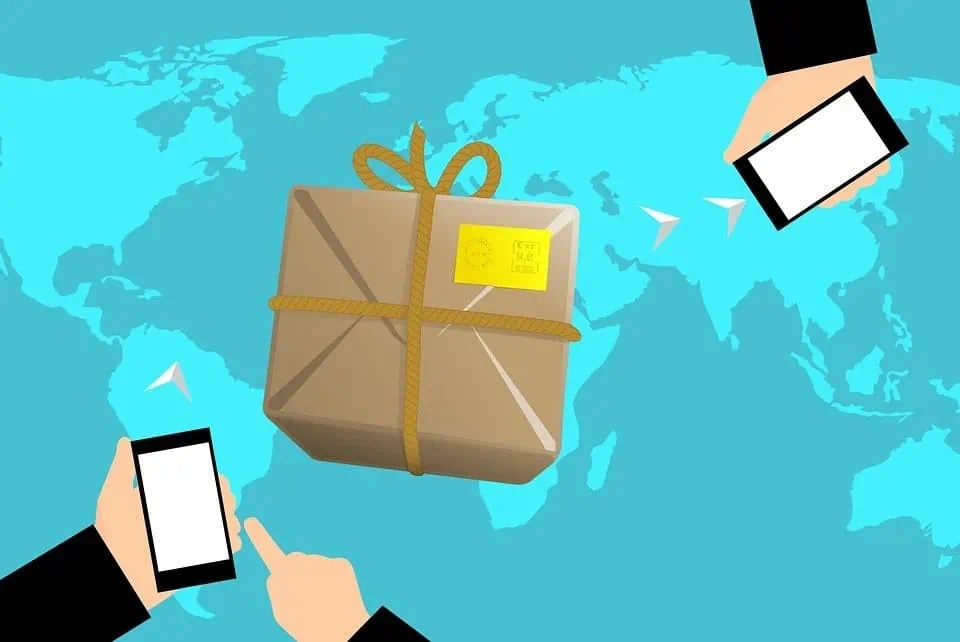Dropshipping is being touted as an easy way to set up an eCommerce business, with a lot less risk than the traditional eCommerce model. It is estimated that an outstanding 23% of all online sales around the world are now being fulfilled through dropshipping. This stat equals to around $85 billion every year. However, there are downsides as well as upsides to dropshipping, which are important to consider before you start up your business.
What is Dropshipping?
Dropshipping means that you act as a seller, but you don’t hold stock yourself. When your customer places an order, it is automatically shipped from a third party. You don’t have to buy any stock upfront, which a lot of people like because it means there is less risk involved. You also don’t need to hold the stock yourself, meaning you don’t have to invest in a warehouse or storage. It is a growing method of starting an eCommerce business and one which does work, but as with any new business technique, there are a number of risks you need to be aware of before starting your own company.
It is worth paying attention to such a business model as Dropshipping on eBay, which involves selling goods on eBay without stock. Sellers list items with suppliers, and once the transaction is complete, the supplier ships the item directly to the buyer. This method reduces the need for upfront investment and inventory management. It is an affordable way for entrepreneurs to start an online business, but it requires careful supplier selection and attentive customer service to ensure product quality and on-time delivery.
How Do You Start Dropshipping?
If you want to set up this particular type of eCommerce store, you first need to decide on your product/s and find a supplier – don’t just settle on the first supplier, either. Take the time to interview each potential supplier and find someone you truly click with, as by doing so, you will enjoy a respectful, reliable relationship. You then need to create a professional eCommerce store, one where customers can pay quickly and easily, as well as being responsive whether someone is using a laptop or a smartphone to access the store. Marketing is the next step, and you can use a number of methods. These methods include social media marketing, implementing white hat SEO both on page and off page, as well as word of mouth marketing.
1. Less Capital
The major benefit of dropshipping is the fact that you don’t need any capital to get started. You don’t owe anything to your third party shipper until your customer places an order.
The downside is that the dropshipper will usually charge more for stock than you would pay if you were holding stock yourself. This means that you have to charge more to your customers to make the same profit, and probably miss out on sales, or you have to make less money on the transaction.
Rather than dropshipping, many businesses choose to utilize eCommerce business loans, which allow them to purchase stock themselves at a better price. These loans differ from standard business loans because money up to a pre-agreed amount is available for you to utilize at any point. Still, you only ever pay interest on the actual money you take.
2. You Don’t Hold Stock
Not holding stock yourself definitely has advantages; it means that you can run your business from anywhere in the world and move around as much as you want.
The downside is that you don’t have any visibility over what is in and out of stock, or of how well the stock is looked after. This can impact your ability to provide a good service to your customers because they could be placing orders on your site for items that are actually out of stock without you knowing. You could find that orders are accepted that then can’t be fulfilled, which will mean that customers don’t want to come back to you.
3. Wider Selection of Products
By working with dropshippers, you are able to offer a larger range of products because you don’t have to worry about paying for them upfront or storing them.
However, the more products you offer, the more third parties you are managing. This can become a logistical headache and much more difficult than managing your stock yourself out of a centralized location.
4. You Don’t Have To Organize Shipping
Not having to organize shipping is great, one less thing to worry about. However, you should bear in mind that by placing responsibility for shipping with a third party, you are also placing with them the control over how good a service to provide. Dropshippers do not have a vested interest in your customers, so you could find that their shipping service is not of the high quality that you would provide yourself, and that you have no power to improve it.



